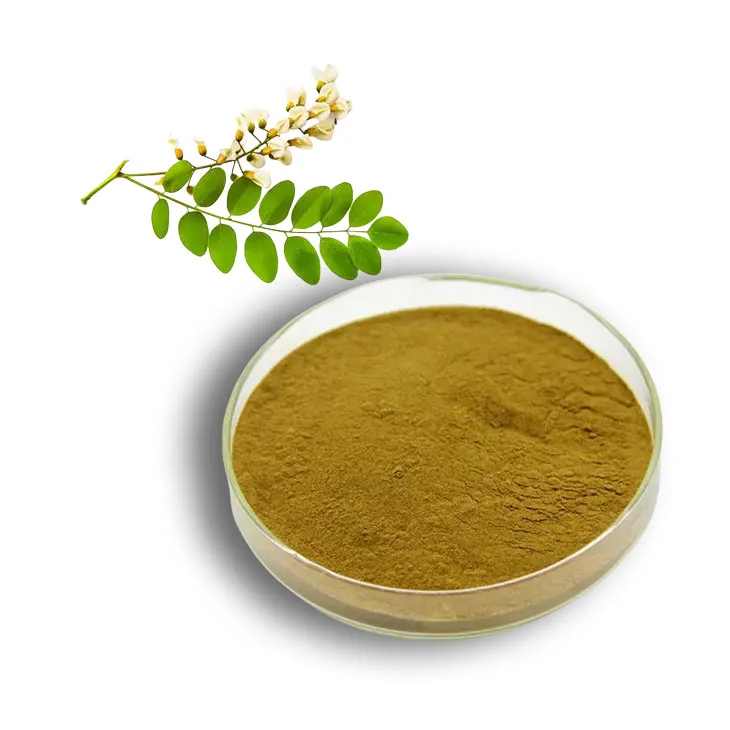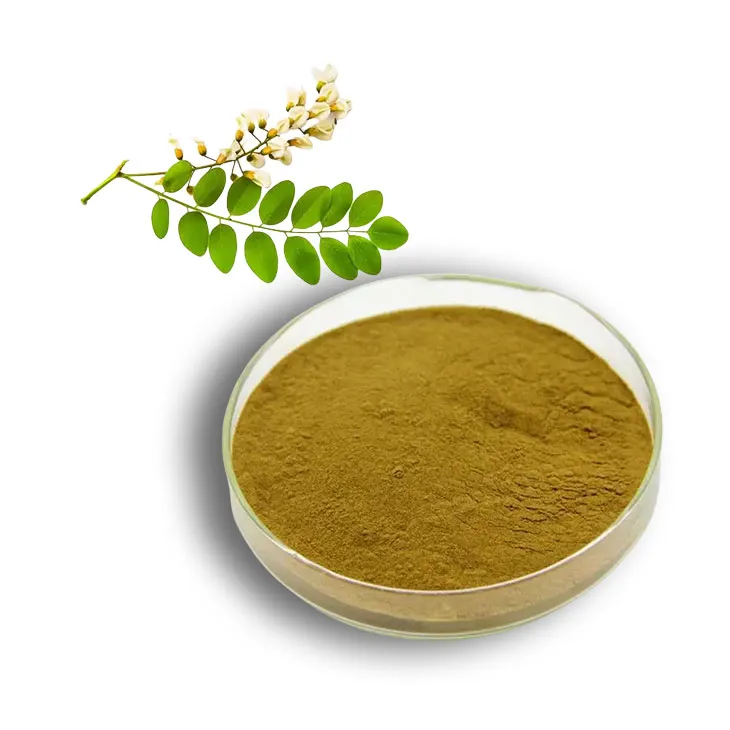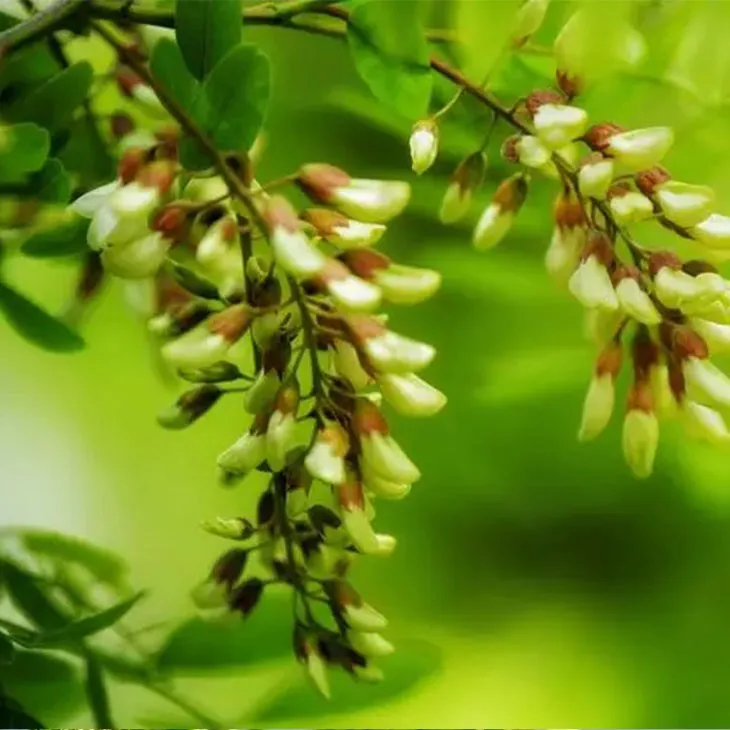- 0086-571-85302990
- sales@greenskybio.com
How to Extract Sophora Japonica Flower Extract by Steam Distillation.
2024-11-28

1. Introduction
Sophora japonica, also known as the Japanese pagoda tree, has been used in traditional medicine for centuries. The extract of Sophora japonica contains various bioactive compounds, which possess potential pharmacological properties. Steam distillation is one of the common methods to obtain the extract. This article aims to provide a detailed step - by - step process of obtaining sophora japonica extract via steam distillation, covering aspects like raw material preparation, distillation equipment, optimal parameters, and quality control.

2. Raw Material Preparation
2.1. Collection
The first step in preparing the raw material for steam distillation is the collection of Sophora japonica. The collection time is crucial. It is best to collect the flowers during their peak blooming period. This ensures that the content of active ingredients is at its highest. The flowers should be carefully picked by hand to avoid damage.
2.2. Cleaning
After collection, the Sophora japonica flowers need to be thoroughly cleaned. Remove any dirt, debris, or insects present on the flowers. This can be done by gently rinsing the flowers with clean water. However, it is important to note that excessive water exposure should be avoided as it may cause the loss of some water - soluble active ingredients.
2.3. Drying
Once the flowers are cleaned, they need to be dried. Drying helps in reducing the moisture content, which is essential for the steam distillation process. The drying can be carried out in a well - ventilated area, away from direct sunlight. Alternatively, a low - temperature drying oven can be used. The drying process should be carefully monitored to ensure that the flowers are not over - dried, as this may also affect the quality of the extract.

3. Distillation Equipment
3.1. Steam Generator
A reliable steam generator is the key component of the steam distillation setup. It should be capable of producing a consistent supply of steam. The steam generator should have a proper control system to adjust the steam pressure and flow rate. For example, a laboratory - scale steam generator with a capacity of generating steam at a rate of [X] liters per minute and adjustable pressure up to [X] bar can be used.
3.2. Distillation Flask
The distillation flask is where the dried Sophora japonica flowers are placed. It should be made of heat - resistant glass, such as borosilicate glass. The size of the distillation flask depends on the amount of raw material. For a small - scale extraction, a [X] - liter distillation flask may be sufficient. The flask should be equipped with a proper inlet for the steam and an outlet for the vapor - liquid mixture.
3.3. Condenser
The condenser is used to cool down the vapor - liquid mixture coming out of the distillation flask. A water - cooled condenser is commonly used. The condenser should have a sufficient cooling capacity to ensure that the vapor is completely condensed. The cooling water should flow at an appropriate rate to maintain efficient condensation.
3.4. Receiver
The receiver is used to collect the distillate, which is the sophora japonica extract. It can be a simple glass flask or a graduated cylinder for easy measurement of the volume of the extract. The receiver should be clean and dry before use.

4. Steam Distillation Process
4.1. Loading the Raw Material
Place the dried Sophora japonica flowers into the distillation flask. Ensure that the flowers are evenly distributed in the flask. Do not over - fill the flask, as this may affect the steam circulation and the efficiency of the distillation process.
4.2. Connecting the Equipment
Connect the steam generator to the inlet of the distillation flask. Make sure the connection is tight to prevent steam leakage. Connect the outlet of the distillation flask to the condenser, and then connect the condenser to the receiver.
4.3. Starting the Steam Distillation
Start the steam generator and gradually increase the steam pressure and flow rate to the desired values. Optimal steam pressure and flow rate are important parameters for a successful distillation. For example, a steam pressure of [X] bar and a flow rate of [X] liters per minute may be suitable for Sophora japonica flower distillation. Monitor the temperature inside the distillation flask during the process.
4.4. Duration of Distillation
The distillation process should be carried out for an appropriate duration. This depends on various factors such as the amount of raw material, the steam pressure, and the flow rate. Generally, the distillation may last for [X] hours. During this time, the extract is gradually separated from the raw material and collected in the receiver.
4.5. Ending the Distillation
When the distillation is complete, first stop the steam generator. Then, allow the system to cool down gradually. Disconnect the equipment carefully, starting from the receiver end.
5. Optimal Parameters
5.1. Temperature
The temperature inside the distillation flask is an important parameter. It should be maintained within a certain range. For Sophora japonica steam distillation, a temperature range of [X] - [X] °C is often considered optimal. This temperature range helps in the efficient extraction of the active ingredients without causing their degradation.
5.2. Pressure and Flow Rate
As mentioned earlier, the optimal steam pressure and flow rate play a crucial role. A steam pressure of around [X] bar and a flow rate of [X] liters per minute can ensure a good extraction efficiency. However, these values may need to be adjusted according to the specific characteristics of the distillation equipment and the amount of raw material.
5.3. Ratio of Raw Material to Water
The ratio of the amount of dried Sophora japonica flowers (raw material) to the amount of water used in the steam generator also affects the extraction efficiency. A ratio of [X]:[X] (raw material: water) is often recommended. This ratio ensures that there is sufficient steam to extract the active ingredients from the flowers effectively.
6. Quality Control
6.1. Purity of the Extract
One of the important aspects of quality control is to ensure the purity of the sophora japonica extract. This can be determined by various analytical methods such as high - performance liquid chromatography (HPLC). HPLC can separate and quantify the different components in the extract, helping to identify any impurities.
6.2. Content of Active Ingredients
The content of active ingredients in the extract should be measured. For Sophora japonica extract, the main active ingredients may include flavonoids, alkaloids, etc. Spectrophotometric methods or other chemical analysis techniques can be used to determine the content of these active ingredients. The extract should meet the required standards in terms of the content of active ingredients.
6.3. Microbiological Quality
The microbiological quality of the extract should also be checked. This includes testing for the presence of bacteria, fungi, and other microorganisms. Microbiological tests such as total plate count, yeast and mold count, and pathogen detection should be carried out. If the microbiological quality does not meet the standards, appropriate sterilization or purification methods should be applied.
7. Conclusion
Steam distillation is an effective method for obtaining Sophora japonica extract. By carefully preparing the raw material, using appropriate distillation equipment, and controlling the optimal parameters, a high - quality extract can be obtained. Quality control measures are essential to ensure the purity and efficacy of the extract. This comprehensive guide provides valuable information for researchers and producers involved in the extraction of Sophora japonica extract using steam distillation.
FAQ:
What are the necessary raw materials for steam distillation of Sophora Japonica Flower Extract?
For steam distillation of Sophora Japonica Flower Extract, the main raw material is of course the fresh or dried Sophora Japonica flowers. It is important to ensure that the raw materials are clean, free from excessive impurities and contaminants. Additionally, water is required as a medium for steam generation during the distillation process.
What kind of distillation equipment is suitable for extracting Sophora Japonica Flower Extract?
Typically, a glassware - based steam distillation apparatus is commonly used. This includes a distillation flask, a condenser, a receiving flask, and a heat source. The distillation flask should be of an appropriate size to hold the Sophora Japonica flowers and water mixture. The condenser is crucial for cooling the steam back into liquid form, and the receiving flask is used to collect the extracted liquid. Stainless - steel distillation equipment can also be an option, but glassware is often preferred in laboratory - scale extractions for better visibility and to avoid potential reactions with the metal.
What are the optimal parameters for steam distillation of Sophora Japonica flower extract?
The temperature is a key parameter. Usually, a temperature range between 100 - 110°C is maintained, as this is the boiling point range of water under normal atmospheric pressure which is used to generate steam. The ratio of Sophora Japonica flowers to water also matters. A common ratio is around 1:5 to 1:10 (flowers to water by weight). The distillation time can vary depending on the quantity of raw materials, but generally, it can range from 2 - 5 hours. Longer distillation times may lead to a higher yield, but may also increase the risk of extracting unwanted substances.
How to ensure the quality of the Sophora Japonica flower extract obtained by steam distillation?
Quality control of the extract involves several aspects. Firstly, the purity of the raw materials should be verified before distillation. During the distillation process, monitoring the temperature, pressure (if applicable), and distillation rate is essential. After extraction, the obtained extract can be analyzed using techniques such as chromatography (e.g., HPLC) to check for the presence of the desired active compounds and the absence of contaminants. Also, sensory evaluation can be carried out to assess the appearance, odor, and color of the extract.
Are there any safety precautions to be taken during the steam distillation of Sophora Japonica flower extract?
Yes, there are several safety precautions. When using heat sources, proper insulation should be ensured to prevent burns. The distillation equipment should be properly assembled and checked for leaks before starting the process, as steam leaks can cause scalds. Also, since Sophora Japonica flowers may release certain substances during distillation, it is advisable to carry out the process in a well - ventilated area. Protective gloves and goggles should be worn when handling the equipment and the raw materials.
Related literature
- Steam Distillation in Botanical Extracts: Principles and Practices"
- "Sophora Japonica: Chemical Composition and Extraction Techniques"
- "Optimizing the Extraction of Phytochemicals from Medicinal Plants: A Focus on Steam Distillation"
- ▶ Hesperidin
- ▶ citrus bioflavonoids
- ▶ plant extract
- ▶ lycopene
- ▶ Diosmin
- ▶ Grape seed extract
- ▶ Sea buckthorn Juice Powder
- ▶ Beetroot powder
- ▶ Hops Extract
- ▶ Artichoke Extract
- ▶ Reishi mushroom extract
- ▶ Astaxanthin
- ▶ Green Tea Extract
- ▶ Curcumin Extract
- ▶ Horse Chestnut Extract
- ▶ Other Problems
- ▶ Boswellia Serrata Extract
- ▶ Resveratrol Extract
- ▶ Marigold Extract
- ▶ Grape Leaf Extract
- ▶ blog3
- ▶ blog4
-
Chinese Oyster Peptide Powder Factories.
2024-11-28
-
The best organic L - carnitine.
2024-11-28
-
Certified organic acerola cherry extract.
2024-11-28
-
Wholesale β - carotene suppliers.
2024-11-28
-
Chinese lemon balm extract factories.
2024-11-28
-
100% Pure Organic Bitter Melon Extract.
2024-11-28
-
100% Pure Natural Yellow Pine Extract.
2024-11-28
-
Dandelion Leaf Extract
2024-11-28
-
Lemon Juice Powder
2024-11-28
-
Milk Thistle Extract
2024-11-28
-
White mustard seed extract
2024-11-28
-
Polygonum Cuspidatum Extract
2024-11-28
-
Boswellia Serrata Extract
2024-11-28
-
Saponin Extract
2024-11-28
-
Maitake Mushroom Extract
2024-11-28
-
Curcuma Longa Extract/Turmeric extract
2024-11-28
-
Chaste Berry Extract
2024-11-28





















